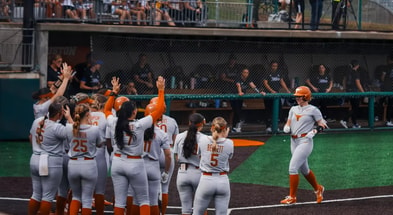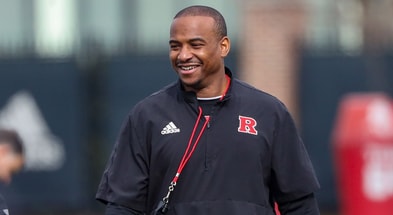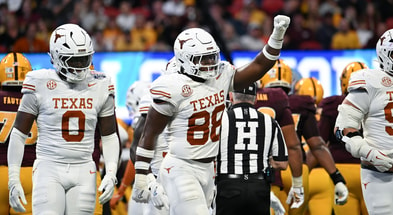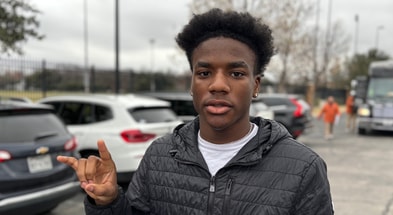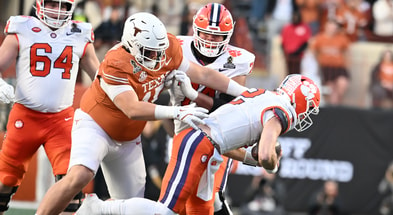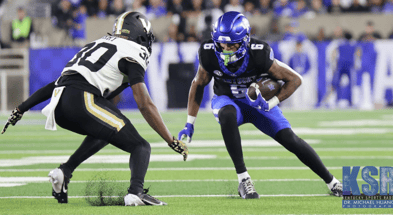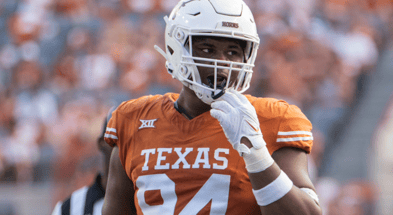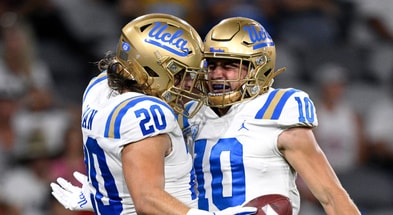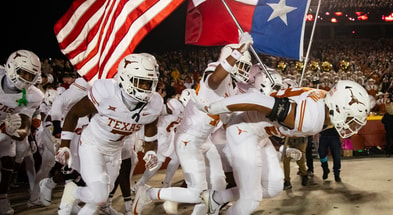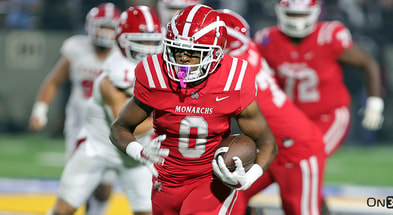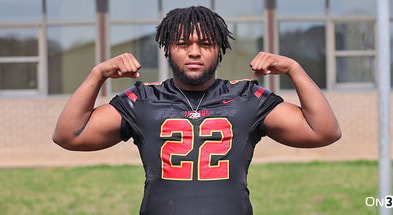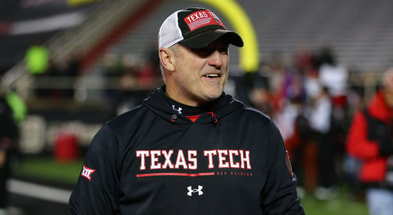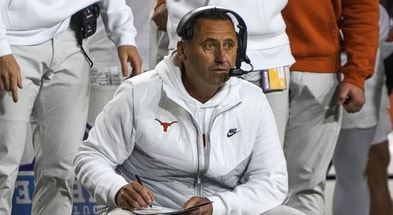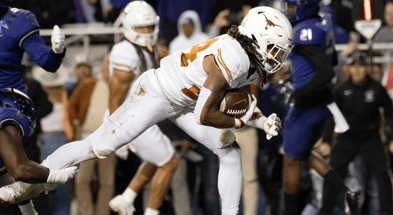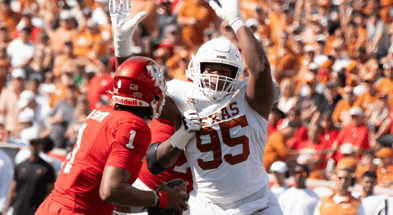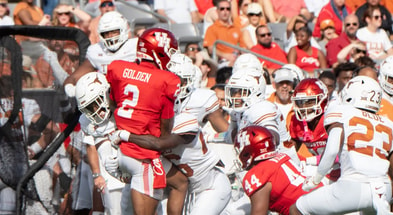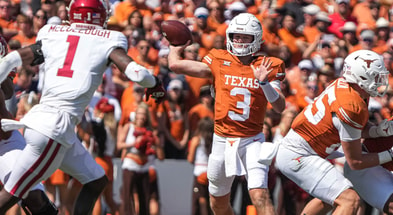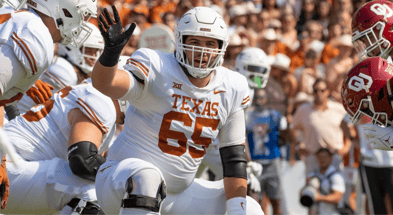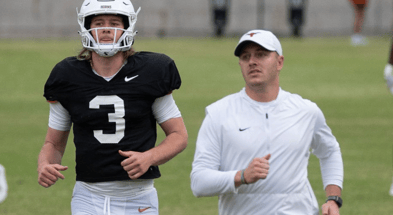Transcripts from Coach V - Offense

Any grading scale applied to football is going to have some degree of subjectivity. Beauty is in the eye of the beholder the saying goes, and Inside Texas’ @UTexasfootball has seen a lot of beauty (or ugly) on the gridiron in his esteemed career.
Coach puts what he sees subjectively into an objective grading system.
My grading system is based on total points earned against number of plays played. The points are awarded individually on each and every separate play. There are five different possible grades for each play. Players may earn a plus three (3) for a five star type play—-plus two (2) for above average execution—-plus one (1) for doing their job successfully—-zero (0) for getting beat but knowing and attempting their assignment—-and minus 3 (-3) for a missed assignment.
Each player has a total number of points and a total number of his own individual plays. You divide the total number of plays into the total number of points which gives you scale. The grading scale is as follows:
Any player averaging one point per play (1.0) grades out a B which is winning football. If a player plays 60 plays with 60 total points he would earn a passing grade—each point he goes over the total number of plays raises his grade accordingly. The system is built around rewarding any player that doesn’t beat himself or his team with mental mistakes.
The system also punishes any player that knows what to do but loses too many individual battles. If a player plays 60 plays but loses 10 of those with zero special plays (60 plays—50 points) he falls below the 1.0 needed for a passing grade of B.
I use the plus/minus (A-, B+, etc,) when the numbers indicate a partial add or subtract from the grade. This system was used by my first coaching staff and I kinda carried it with me for thirty years—it’s not perfect but it gives the position coach a measuring stick for his individual players.
The only way to earn the highest grade of A is to play a perfect game. I’ve had exactly zero up to right now so great games still can be better so A- is a very popular second best. This system and my grades will always be subjective filled with agree and disagree opinions. It’s entirely fair for disagreement (without it we might not have horse races) but it’s important to remember that each play only counts once instead of allowing a big mistake to have major influence on an individual’s final grade.
Earning a point per play in Coach’s system is passing, which is often a source of confusion. “B- was bad?” In the objective world of Coach’s system, it means not properly executing the assignment on every play. One person messes up, and a touchdown can ensue. CeeDee Lamb’s score this season in Dallas is good evidence of that.
I decided to put together the final transcript for the 2019 Longhorn offense.
A strikingly low amount of yellow compared to the same chart for the defense. Of the 13 failing grades issued to offensive players by Coach in 2019, only two were below the “just missed it” level of B-.
Sam Ehlinger’s season-opening performance that included two of his five interceptions for the year and a 54 percent completion percentage was one.
Coach V on that Maryland performance by Ehlinger: “My only comment about the QB situation is it’s obvious we need a better passer than the position offered yesterday. If we are going to run a QB oriented offense without the QB keeping off the zone we damn sure better be able to throw effectively. Maybe the staff needs to rethink exactly what they want the position to deal and deliver because right now we are very predictable and easy to defend.”
It was a legitimate gripe at the time. Ehlinger was a quarterback with fullback running capabilities but was utilized on the ground seven times for only 30 yards. Whatever Ehlinger had done in order to win the job during fall camp did not play out week one at Fedex Field.
Things would look up at QB, as the following week Ehlinger was 21-for-27 through the air and ran 12 times for 51 yards and a score on the ground.
The position improved throughout the year. Ehlinger was a consistent playmaker for the offense. He received more A- grades than B/B+ grades, and his effort kept the Longhorns in some games when the defense faltered.
After USC: “Sam is just Sam for better or worse. He took care of the offense with leadership. You can count his bad decisions on one hand. If Sam can keep improving at this rate we just might be tougher than a two dollar steak before it’s all said and done.”
The only other sub-B- performance this season was Calvin Anderson’s game at Texas Tech. The Rice grad transfer brought his consistent play back home from Houston when he made the decision to be a Longhorn, but it wasn’t there in Lubbock.
The Longhorn coaches frequently noted the ability for the OL to protect the quarterback, but its struggle in creating push at the line of scrimmage in the run game. That might have been Anderson’s biggest personal knock, but throughout the year he was a reliable blindside protector for his fellow Chap.
The wall of green from the receiver section of the chart is evidence of the above average level of play from Texas’ starting trio. The only game Lil’Jordan Humphrey scored lower than a B+ was Oklahoma State when he missed the opening portion of the game. Devin Duvernay either received an A- or a B+ with a majority being the former. Collin Johnson was almost identical, with only one B to bring him down.
Top 10
- 1Breaking
Deion Sanders
CU coach gets huge extension
- 2
Connor Stalions
Wants to be Michigan HC
- 3New
Paige Bueckers decision
UConn star declares for WNBA
- 4Trending
Buzz Williams
Eyeing Maryland job if open
- 5
Elite Eight game times
Saturday tips times, TV announced
Get the On3 Top 10 to your inbox every morning
By clicking "Subscribe to Newsletter", I agree to On3's Privacy Notice, Terms, and use of my personal information described therein.
The receivers were consistent in almost everything they did this year, especially blocking. The WR screen became as effective as a run between the tackles, good for a handful of yards, because of the will and ability to block shown on the outside. There were not a lot of explosive plays, but there was a lot of reliable play.
Zero fails from Andrew Beck, who was rewarded with first team all-conference honors as a fullback. His ability to do a little bit of fullback, a little bit of tight end was a big part of the offense’s success. He was more than an extra blocking surface, and parlayed that into career numbers in his final season.
No fails from either starting running back, who did not put the ball on the ground often this season. Daniel Young did put the ball on the ground at various points, and wasn’t able to elevate his play past Keaontay Ingram’s or Tre Watson’s.
The backup wide receiver corps of John Burt, Jerrod Heard, Joshua Moore, Brennan Eagles, and D’Shawn Jamison all executed well to Coach’s eye.
Sam Cosmi had no fails. A stellar season from the redshirt freshman as part of a good product from Herb Hand in his first season as OL coach.
The list of “attaboys” as opposed to gripes goes on and on. The amount of green on this chart pairs well with the assertion that the Texas offense was responsible for staying in or winning football games in 2018 as opposed to doing more harm than good for the Longhorns’ chances.




